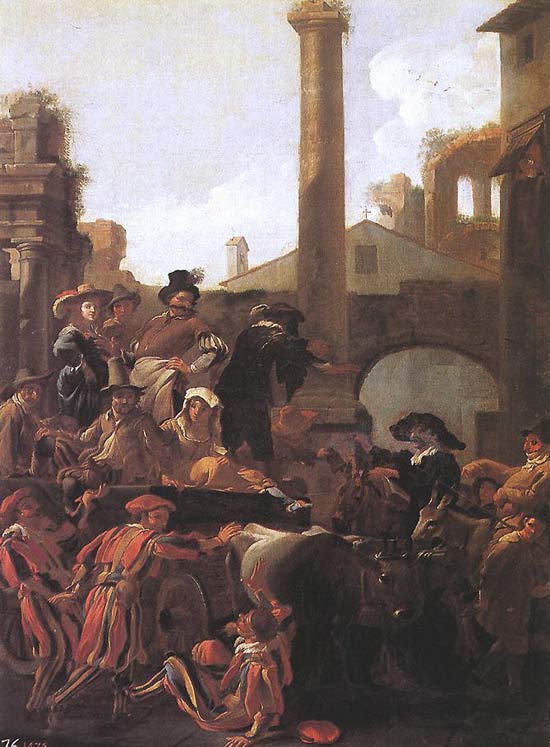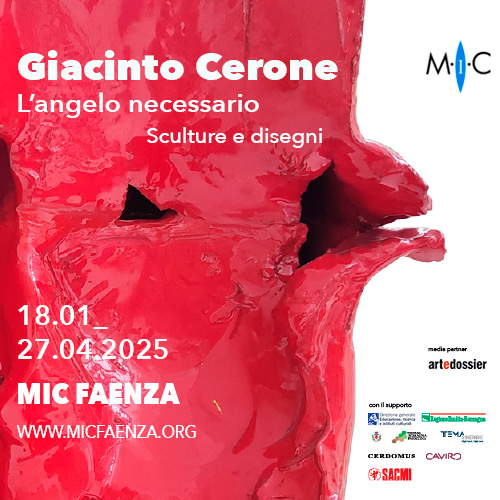A mid-seventeenth-century carnival: the carnival in Rome by Jan Miel
Among the various painters who depicted carnival scenes, a prominent place belongs to Jan Miel (1599 - 1663). He was a Flemish painter active in the 17th century and one of the leading exponents of the group of so-called Bamboccianti: these were painters, mostly Flemish and Dutch, who worked in Rome in the first decades of the 17th century, and they took this name from their “leader” Pieter van Laer, known as “the Bambocciante” because of his almost childlike somatic features. Bamboccianti used to depict scenes from everyday life in Rome at the time: this Carnival in Rome is a typical example of this way of making art. And in Jan Miel’s production, this is not the only example of a work with a carnival subject: there are others preserved in various museums and collections.
The work dates from 1653; we know this because it is signed and dated. Even in eras older than our own, carnival was nothing more than a time of celebration, resulting in wild dancing and abundant eating: often, Flemish painters lingered precisely in depicting the more purely “eating” aspect of carnival. One had, in short, to celebrate as much as one could (and often such celebrations would result in the wildest debauchery), because after Shrove Tuesday the fasting and reflective period of Lent would open. Jan Miel, in his painting, depicts for us a carnival scene in the streets of Rome, describing it with all the typical contours of the popular festival that Carnival was (and still is).
 |
| Jan Miel, Carnival in Rome (1653; Madrid, Prado Museum) |
We see an ox-drawn wagon carrying some characters, many of them masked, and some men, also masked, follow it, in an obvious state of altered state due no doubt to a few too many drinks. The custom of parading floats during Carnival was in use as far back as ancient times, and in each town these parades took on a wide variety of meanings, but usually they were floats that sublimated good omens for the impending spring, or, as in many traditions that have survived to the present day, they carried characters around towns joking with the populace, often mocking the powerful. In the scene, the wagon’s bizarre parade takes place against the backdrop of a Rome that mixes ancient columns and ruined classical vestiges with buildings constructed in recent times: it was, in short, the Rome that reflected the collective imagination of artists and literati of the time. Characterizing the Roman setting of the scene, we also have the clothing of the three characters following the chariot. They are in fact disguised as Swiss Guards: the carnival, since the earliest times, was also the occasion (at the time probably the only one) to make fun of the powerful, as mentioned just above. Accomplices also were the mild controls that the authorities, even in the Rome of the popes, exercised over the population during Carnival: it was as if, for a certain period of time, the people were granted a few extra licenses.
The satirical intent of the carnival also found its fulfillment in the use of typical characters, the famous masks of the Commedia dell’Arte, which, precisely in the seventeenth century, found great diffusion and which, in a caricatured and exaggerated way, embodied the vices and virtues of the powerful and the people, and were used to bring to life shows, often itinerant, that were remarkably successful, especially among the humbler social classes. We also find a couple of typical Commedia dell’Arte masks near Jan Miel’s wagon, we see them on top of the mules: in particular we have the mask of the doctor, dressed in the dark suit of the lawyers of the time, who embodied the pomposity, empty rhetoric and inconclusiveness of the scholars of the time, and next to him we see a Punchinello, who was the stereotype of the cunning servant, who through his own cunning was able to untangle complicated situations (and gull the powerful).
Some art historians have also speculated that this little group carried by the wagon could also be a traveling theater troupe, given the number of characters, their disguises, but also their individual characterization, which could suggest that Jan Miel was inspired by a real theater troupe, which may have been in Rome at the time the artist executed his work.
This painting by Jan Miel, which like almost all paintings of bamboozlers is characterized by its joyful atmosphere and its adherence to reality, is kept in the Prado Museum in Madrid: it arrived in Spain in 1727, when King Philip V bought it for the Royal Palace of La Granja de San Ildefonso, the residence that the king himself had had built a few years earlier, modeled on the palaces of the French royals, near Segovia. From there, the work later passed on to the Palace of Aranjuez in Madrid, and today it is part of the collections of the great Spanish museum.
Warning: the translation into English of the original Italian article was created using automatic tools. We undertake to review all articles, but we do not guarantee the total absence of inaccuracies in the translation due to the program. You can find the original by clicking on the ITA button. If you find any mistake,please contact us.





























